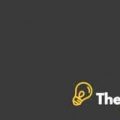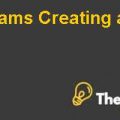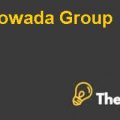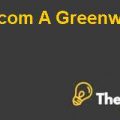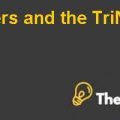Introduction:
Paul Watjen, as being chief financial officer (CFO) of Provident Life and Accidental insurance is working along with his team to derive the right value of the proposed acquisition of Paul revere. The acquisition will provide the company a competitive advantage in the market for disability insurance. The team is considering valuing the business through discounted cash flow applications of free cash flow valuation model.
Provident Life and Accidental Insurance were founded in 1897. The company got its success in disability insurance during 1980s and it became the medium-sized national player in life and health insurance market.
Paul Revere Corporation was incorporated in 1895. It was formed to provide accident, sickness and death benefits to the members of the Masonic Protective Association (MPA). The first disability contract taken place 1918 and it was formed by MPA to facilitate the disability insurance. In 1967, it merged with AVCO Corporation.
The disability insurance contract is in between the insurance company and the individual. The main reason for the contract is to protect the individual from any uncertain event that can cause him disable to earn.
Analysis:
The analysis is based on the bid price of Paul Revere. The analysis incorporates the market multiples for valuation and their effects on valuation and acceptance in the market. The second valuation method of free cash flows is used with the revised information according to the market, but not the blocks of 85-89. The bid price offered is accessed that is $26-$29 per share, whereas the market price is $23/share. The decision is also about to withdraw the bid, offer new bid or let the bid remain same.
Consider the multiple analysis presented to Watjen. What conclusions can you draw from it?
The market multiples are used to value the business and some of the multiples gives an idea about the returns required and actual returns earned by the company.
The Price/Earnings ratio indicates that the company has a potential to earn the times of current profits. The ratio is in terms of the industry, but not cash terms. In this case, the average of the median of P/E ratios is 10.67x (Appendix 1). This shows that the industry has an average of 10.67 time potential to earn in future for its shareholders of the current profits. For valuation purposes, Paul Revere has suffered a loss; therefore the business value cannot take place because of his expected loss in 1996.
The growth in EPS shows that the company can have a growth in net profitability in the future, years that is shown in the percentage. It is considered that the companies under high cap threshold can have an increase in the profitability of 15.5% from the year 1995-1996. The EPS is different for all three thresholds given in the exhibit 7 and the average of all the three becomes the average of the industry. The annuity companies are considered because the future cash average returns are considered as under insurance the nature of the business is same as annuity with some different rules.
I/B/E/S forecast is based on the estimated growth given by the institutional brokers of that country. The institutional Brokers’ Estimate System covers thousands of companies and many markets and the analysis is detailed based on the publicly available information. The forecast is generally medium-term and in this case, it is five years.
Provident Life and Accident Insurance Case Solution
Derive a cost of capital for conducting a DCF analysis. Does the pattern of betas presented in Exhibit 7 make sense?
The cost of capital for this valuation is around 12.73%. The cost of capital is derived through the help of many other variables. The cost of capital is derived through weighted average cost of capital (WACC) method in which the cost of equity and cost of debt is weighted and multiplied by individual required rates (Appendix 2).
The cost of equity is derived through the capital asset pricing model in which there are some variables that are required. The risk free rate, beta equity and the market risk premium are 6.79%, 0.77 and 7.78% respectively. The cost of equity for the valuation purpose is 12.92%. The cost of equity is higher than WACC because in WACC, the debt is weighted and the debt required rate is lower because of the risk nature. The equity is more risky than debt, therefore the risk premium is paid through extra returns (Appendix 2)........................
This is just a sample partial case solution. Please place the order on the website to order your own originally done case solution.


